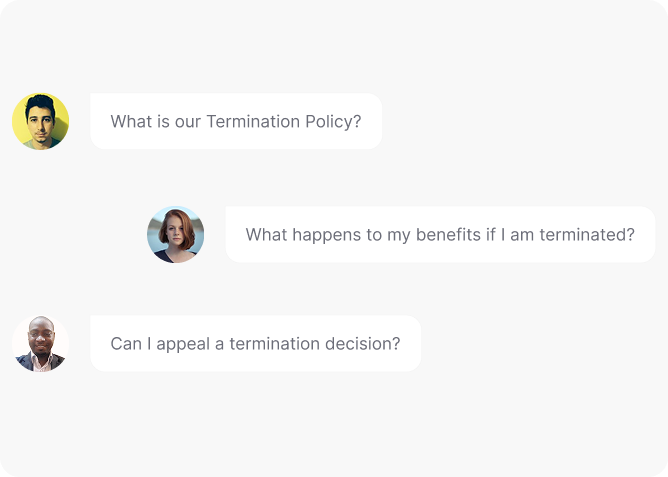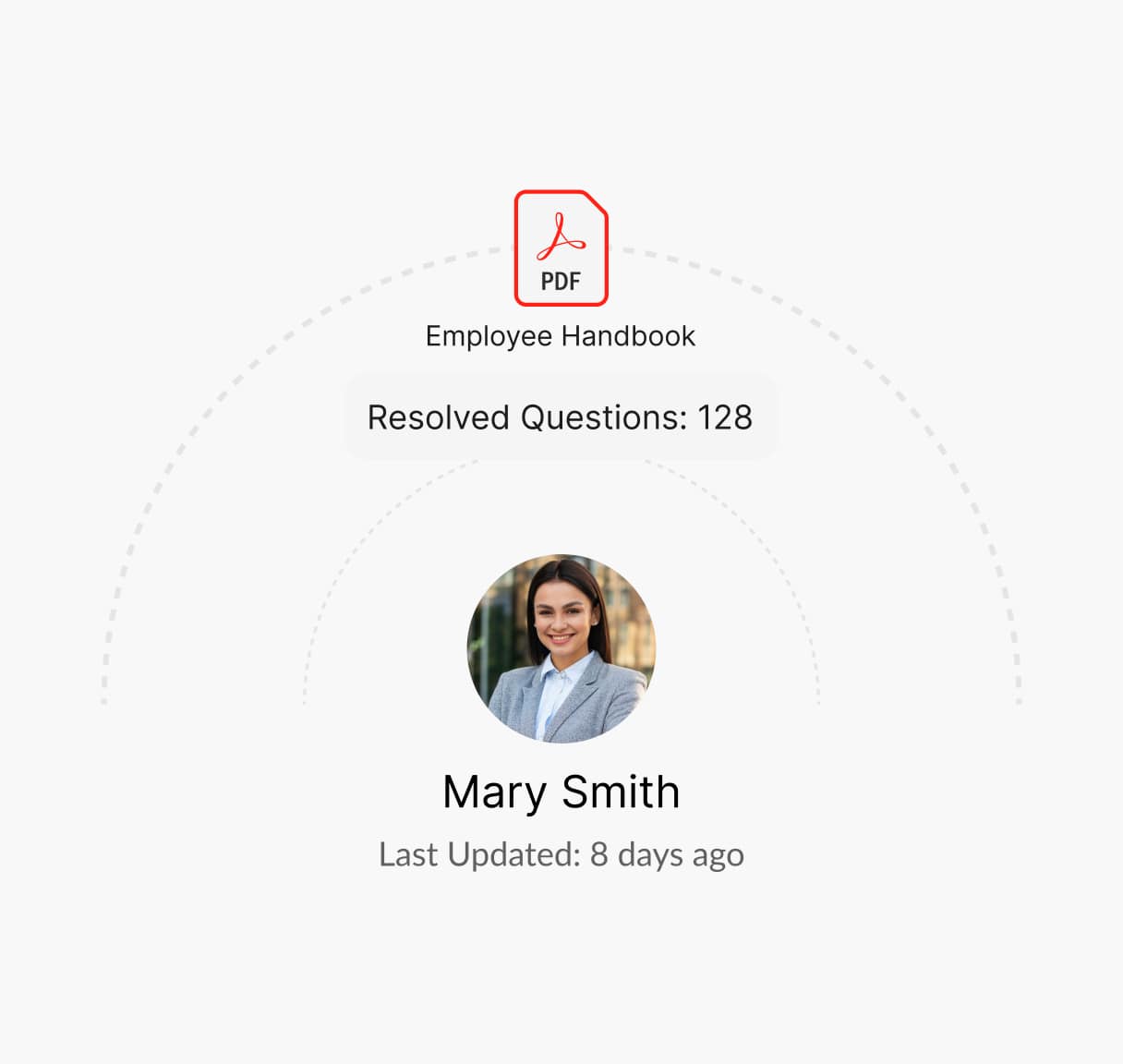Everything You Need to Know About Termination Policy
A termination policy is a critical component of any organization’s HR framework. It sets clear guidelines for ending an employee’s employment, whether due to resignation, layoffs, or dismissal, ensuring the process is handled professionally, legally, and ethically. By defining expectations and responsibilities, a well-structured termination policy protects both the organization and its employees, minimizing legal risks and promoting transparency.

What is a Termination Policy?
A termination policy outlines the procedures and protocols that an organization follows when ending an employment relationship. It includes the reasons for termination, notice periods, exit formalities, and the rights and obligations of both parties. This policy ensures consistent treatment across the organization and compliance with labor laws.
Guidelines for Creating a Termination Policy
To create a comprehensive and effective termination policy, it’s essential to focus on clear guidelines that protect employee rights, ensure legal compliance, and safeguard the company’s operations and reputation. Here’s how you can develop a policy that meets the needs of your team and organization
Clearly Define Grounds for Termination
Clearly define grounds for termination, including voluntary termination (resignation or retirement), involuntary termination (layoffs, redundancies, or dismissals due to misconduct, poor performance, or policy violations).
Ensure Legal Compliance
Ensure legal compliance with federal laws like WARN, COBRA, and EEOC regulations, along with state-specific requirements for notice, final paychecks, and PTO payouts.
Detail Notice Periods
Specify minimum notice periods for both employees and employers, including scenarios where immediate termination is justified (e.g., gross misconduct).
Outline Severance Pay
Clarify whether severance is mandatory or discretionary, how it’s calculated, and any conditions tied to it (e.g., signing a release of claims).
Set Procedures for Exit Formalities
Set procedures for exit formalities, including the return of company property, conducting exit interviews to gather feedback, and issuing final paychecks, W-2 forms, and unused PTO payouts.
Establish Communication Protocols
Establish communication protocols by training managers to deliver respectful termination notices and clearly communicating changes to remaining team members.
What is Covered in a Termination Policy?
An effective Termination Policy should include the following
Grounds for Termination
Definitions of voluntary and involuntary termination, layoffs, and terminations for cause.
Notice Periods
Minimum notice requirements for both employees and employers, including at-will employment exceptions.
Final Paycheck and Benefits
Procedures for issuing the final paycheck, addressing unused PTO payouts, and detailing COBRA health insurance continuation.
Severance Pay
Eligibility, calculation, and any conditional requirements for receiving severance.
Exit Procedures
Steps for returning company property, revoking system access, and conducting exit interviews.
Legal Compliance
Federal and state labor law adherence, including WARN, FLSA, COBRA, and anti-discrimination laws.
Rehire Eligibility
Policies on whether terminated employees can reapply or be rehired.
Employee Rights and Appeals
Clear instructions on how employees can contest or appeal a termination decision if applicable.
Layoff-Specific Provisions
If applicable, provide details about how layoffs are conducted, such as offering outplacement services, references, or counseling resources.
Need help creating a Temination Policy?
How Winslow Helps HR Teams Streamline The Process Of Employee Termination
Managing termination policies in compliance with US labor laws can be complex, but Winslow simplifies the process. Winslow’s features include

Instant answers anytime
Winslow empowers employees to instantly access the termination policy through Slack, Teams, or email. Whether they need clarity on notice periods, final paycheck procedures, or severance eligibility, employees can get answers instantly without waiting for HR responses.
Personalized Support
Winslow delivers instant, AI-powered answers to all HR questions, including those about your Termination Policy, ensuring employees have clear information on the process and their rights.


Analytics and Insights
Winslow tracks all termination policy-related queries, providing HR teams with actionable insights. By identifying common questions and recurring concerns, you can refine your policy and ensure it remains clear, comprehensive, and legally compliant.
Streamline Termination Policy Queries with Winslow
Winslow simplifies termination policy management, allowing HR teams to focus on strategic tasks while providing employees with quick, reliable answers. Enhance efficiency, ensure compliance, and improve the offboarding experience with Winslow’s AI-powered support.
Frequently asked questions
Have further questions about Winslow, contact us at sales@usewinslow.com
Does the termination policy apply to all employees?
Yes, a termination policy typically applies to all employees, but specific terms may vary based on employment type (e.g., full-time, part-time, contractors) or location due to state-specific laws.
What are the common grounds for termination?
Grounds for termination generally include:
- Voluntary resignation.
- Involuntary termination (e.g., poor performance or misconduct).
- Layoffs due to redundancy or restructuring.
- Termination for cause (e.g., policy violations, fraud).
What is at-will employment, and how does it affect termination?
At-will employment means either the employer or the employee can terminate the employment relationship at any time, with or without cause or notice, as long as it doesn’t violate applicable laws (e.g., anti-discrimination laws).
What happens to unused PTO upon termination?
The payout of unused PTO depends on the company policy and state laws. Some states require employers to pay for unused vacation days, while others do not.
How is the final paycheck issued?
The timeline and process for issuing the final paycheck depend on state laws. In most cases, employers must issue the final paycheck on the last working day or within a specific time frame after termination.
What is severance pay, and who is eligible for it?
Severance pay is a monetary benefit provided to employees upon termination, often in layoffs or mutual separations. Eligibility and calculation depend on the company’s policy, employee tenure, and agreements.
Additional resources
Device Usage Policy
Managing employee leave effectively is vital for maintaining workforce productivity and compliance....
Learn moreconfidentiality policy
Protecting sensitive information is crucial. A clear Confidentiality Policy outlines guidelines for...
Learn moreclaim reimbursement
Ensuring fair compensation for expenses is key. A clear Claim Reimbursement Policy...
Learn more




